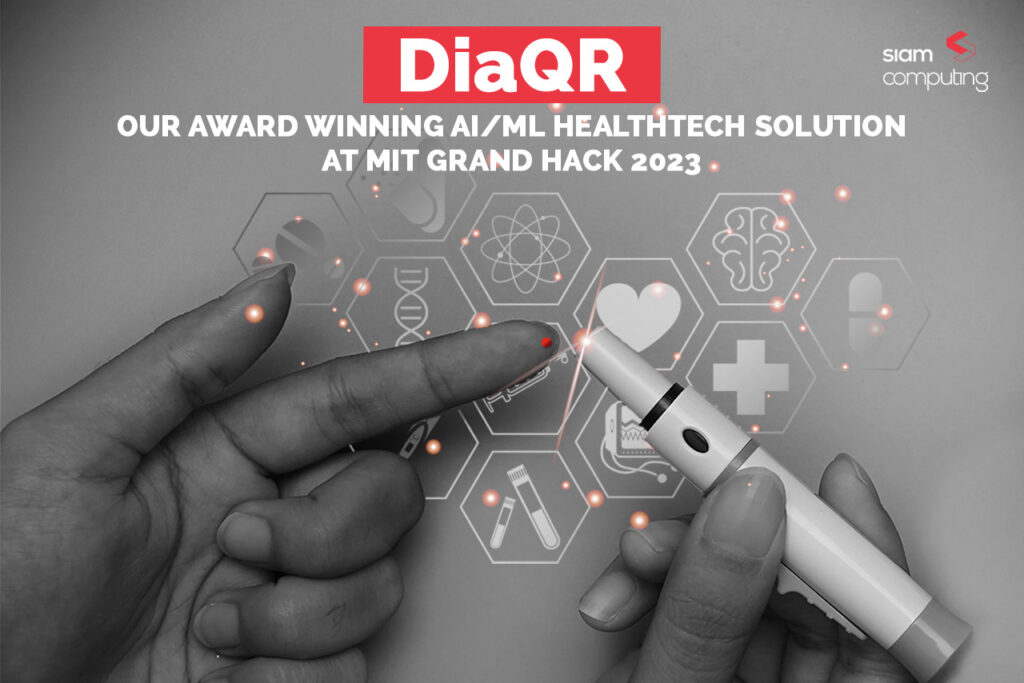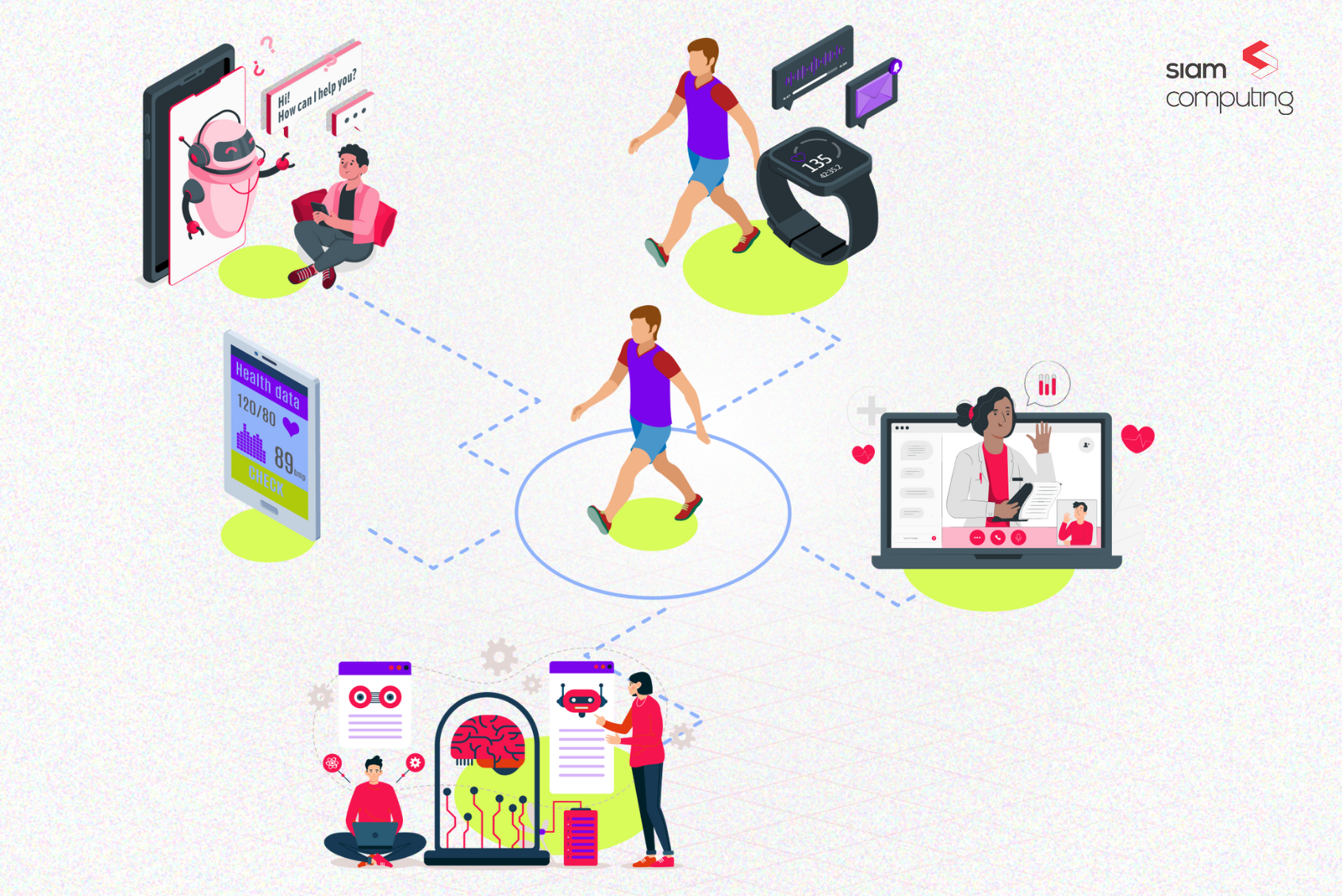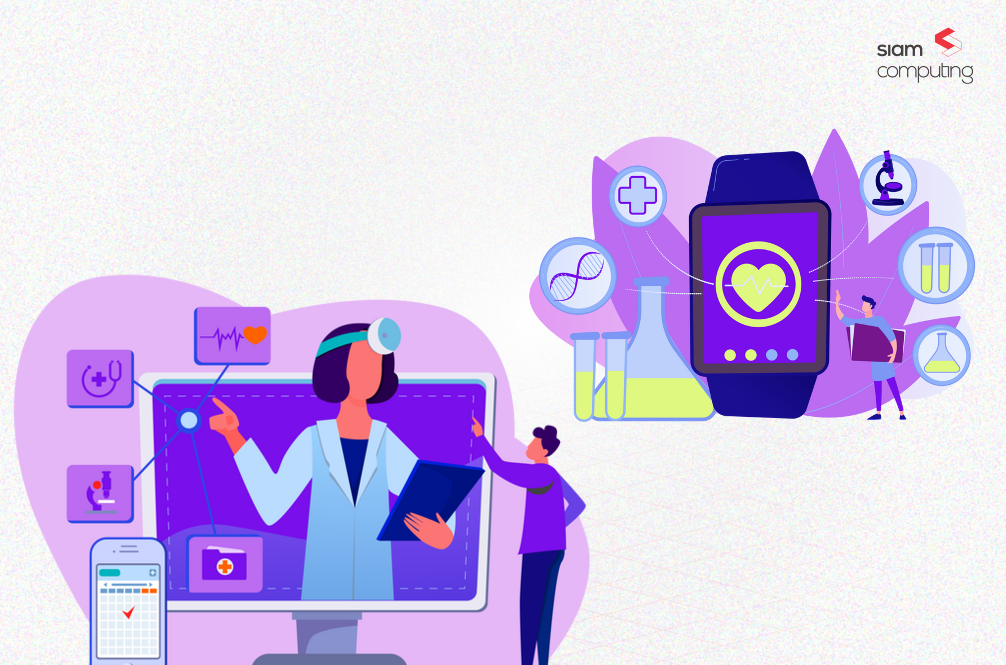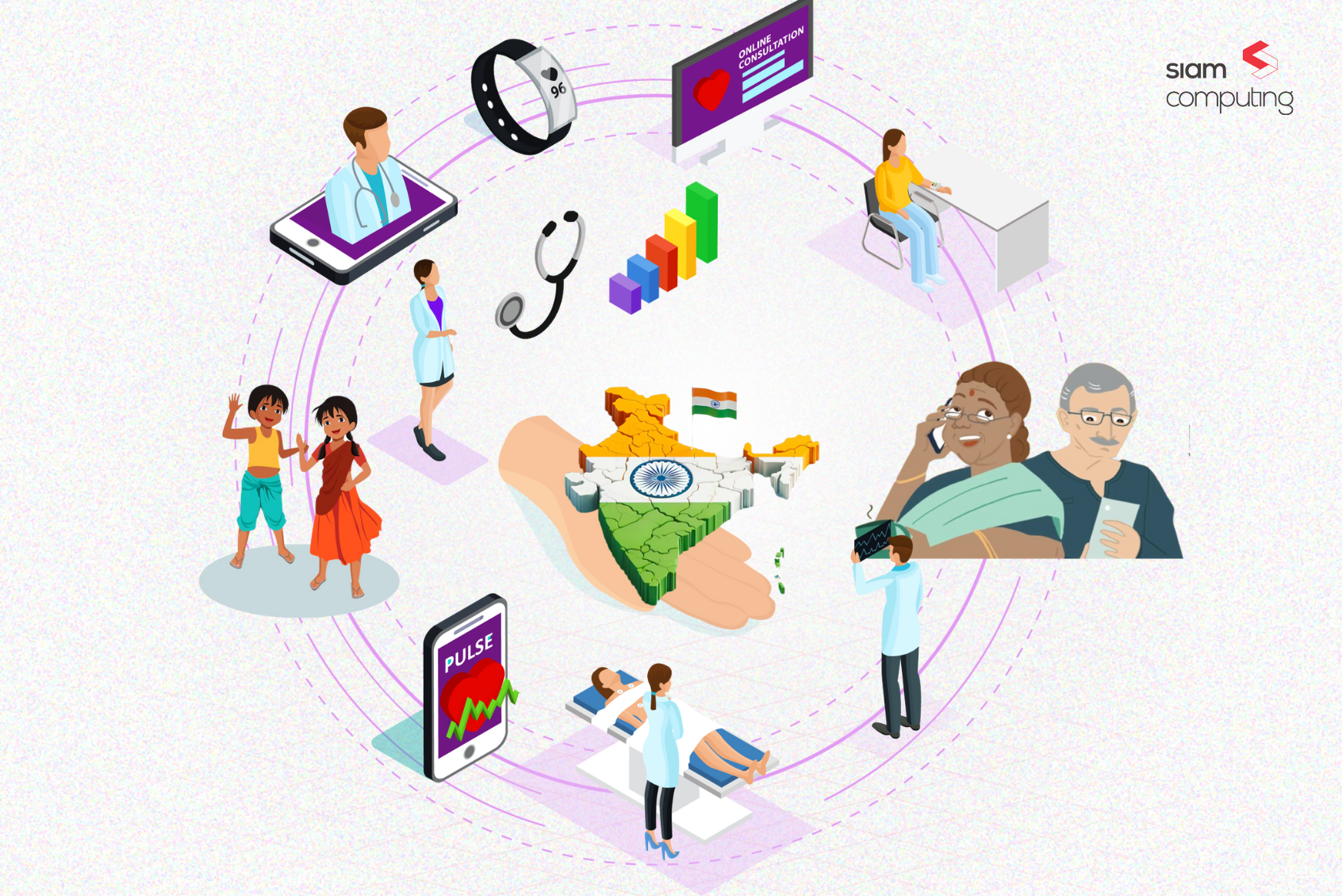The winds of change are sweeping through the healthcare landscape. The traditional fee-for-service (FFS) model, where care providers are reimbursed based on the volume of services delivered, is gradually giving way to a more patient-centric Value-Based Care (VBC). At the heart of this transformation lies a powerful force – Artificial Intelligence (AI).
Before we delve into the transformative applications of AI in VBC, let’s rewind and understand the growing momentum behind this value-based approach.
The increasing burden of chronic diseases, coupled with the ever-rising healthcare costs, has exposed the limitations of the FFS model. Patient needs often take a backseat here with a focus on profits by delivering more services. VBC is a much-needed course correction that aligns financial incentives with positive health outcomes.
Maximizing the benefits of VBC requires effective data collection, analysis, and utilization. Healthcare systems generate an avalanche of data – patient records, medical histories, clinical notes, test results, and more. While this data holds immense potential for improving healthcare delivery, traditional data analysis methods often struggle to keep pace. Here’s where AI steps in, offering a powerful solution to unlock the hidden insights within this data goldmine.
Let’s dive into the potential of data-driven AI models in delivering value-based care and the challenges in implementing it, in more detail.
Unlocking the Potential of Data in VBC
As I mentioned earlier, VBC thrives on data. It relies on collecting and analyzing a wide range of patient information to identify high-risk individuals, predict potential complications, and tailor interventions for improved outcomes. This data can come from various sources:
1. Electronic Health Records (EHRs): EHRs or EMRs (electronic medical records) are digital records that contain a wealth of patient information, including medical history, diagnoses, medications, allergies, lab results, and immunizations.
2. Claims Data: Information on healthcare services rendered and associated costs provides valuable insights into patient utilization patterns and healthcare spending.
3. Patient-Generated Health Data (PGHD): This data includes information collected by and from patients themselves, such as activity trackers, wearable devices, and self-monitoring blood glucose meters.
4. Social Determinants of Health (SDOH): Factors like income, education, and access to healthy food significantly impact health outcomes. VBC models are increasingly incorporating SDOH data to provide a more holistic view of patient health.
However, the sheer volume and complexity of this data can be overwhelming for traditional data analysis methods. Here’s where the magic of AI comes into play. AI algorithms excel at processing large datasets and identifying hidden patterns that might escape human analysis.
These patterns can then be used to:
1. Stratify Patient Populations: AI can effectively segment patient populations based on risk factors and health needs. This allows healthcare providers to target interventions and allocate resources more efficiently. For example, AI can identify patients with a high risk of developing heart disease and prioritize them for preventative screenings and lifestyle modification programs.
2. Predict Health Outcomes: AI models can analyze historical data to predict an individual’s likelihood of developing specific diseases or experiencing complications. Early identification of potential health risks allows for proactive interventions that can prevent or mitigate the severity of future complications.
3. Identify Care Gaps: AI can analyze patient data to identify instances where patients haven’t received recommended screenings, vaccinations, or preventive care measures. This allows healthcare providers to proactively address these gaps in care and ensure patients receive the necessary preventive services.
By leveraging AI for data analysis, VBC models can move beyond reactive care towards a more proactive and preventive approach. This not only improves patient outcomes but also reduces healthcare costs by preventing avoidable complications and hospitalizations.
AI in Action: Key Applications in VBC
The potential applications of AI in VBC are vast and constantly evolving. Here, we’ll explore some of the key ways AI is transforming healthcare delivery under VBC models:
1. Risk Prediction and Stratification
Identifying High-Risk Individuals: AI algorithms can analyze vast amounts of patient data, including medical history, demographics, lab results, and lifestyle factors, to identify individuals at high risk of developing chronic diseases like diabetes, heart disease, or cancer. This allows for early intervention and preventative measures to be implemented before the disease progresses.
Predicting Disease Onset and Complications: AI models can be trained on historical data to predict the likelihood of an individual experiencing specific health complications. For example, AI can analyze data to predict a patient’s risk of developing diabetic foot ulcers. Of all the lower extremity amputations in persons with diabetes, 85% are preceded by a foot ulcer. Early detection allows for timely treatment interventions to prevent vision impairment.
Stratifying Patient Populations: By analyzing patient data, AI can categorize patients into different risk groups based on their needs and potential health trajectories. This enables healthcare providers to tailor treatment plans, resource allocation, and preventive strategies specific to each patient group. For instance, patients identified at high risk for complications might require more frequent monitoring and intensive care management compared to those with lower risk factors.
For Your Eyes Only: Check out DiaQR – Our award-winning AI health tech solution at MIT Grand Hack 2023.

Conceptualized by our CTO Murugesapandian, DiaQR helps in the early detection of diabetes and uses conversational AI to identify low-risk and high-risk patients. It helps combat fatal outcomes of diabetes, such as foot ulcers.
2. Personalized Care and Treatment
Tailoring Treatment Plans: AI can analyze a patient’s unique medical history, genetic makeup, and lifestyle data to create personalized treatment plans. This approach moves beyond a ‘one-size-fits-all’ model and ensures interventions are more effective for individual patients.
Predictive Analytics for Medication Management: AI-powered tools can analyze a patient’s medical profile and predict potential interactions or adverse reactions with medications. This allows healthcare providers to select the most effective and safest medications for each patient, reducing the risk of medication errors and improving treatment outcomes.
Virtual Assistants and Chatbots: AI-powered virtual assistants and chatbots can provide patients with personalized advice and support based on their specific health conditions. These tools can answer questions about medications, offer guidance on managing chronic conditions, and encourage healthy behaviors, promoting patient engagement in their own healthcare.
3. Remote Patient Monitoring (RPM)
Real-Time Monitoring of Vital Signs: AI can analyze data from wearable devices and sensors to monitor a patient’s vital signs, such as blood pressure, heart rate, and blood sugar levels, remotely. This allows for early detection of potential health concerns and timely intervention before complications arise.
Automated Alerts and Notifications: AI algorithms can identify abnormal readings from patient-generated data and trigger alerts for healthcare providers. This allows for immediate action to be taken if a patient’s health status deteriorates, potentially preventing hospital admissions.
Personalized Feedback and Coaching: AI can analyze patient-generated data and provide personalized feedback and coaching tips to help patients manage their chronic conditions more effectively. For instance, AI can offer suggestions on diet, exercise, or medication adherence based on the patient’s real-time health data.
For Your Eyes Only: We have implemented real-time patient monitoring for BeatO – a Series-A funded startup and a market leader in diabetes management.

BeatO’s AI-based Health Neuron System gives the right guidance at the right time to patients via its health chatbot, nudges, and reminders. It also automatically saves readings, analyzes trends, and shares emergency alerts with family and doctors.
4. Population Health Management
Identifying High-Risk Communities: AI can analyze healthcare data to identify communities with a high prevalence of specific chronic diseases or risk factors. This allows for targeted public health interventions and resource allocation to address the specific needs of these communities.
Resource Optimization: AI can analyze data to optimize resource allocation and ensure healthcare providers have the necessary resources to manage high-risk patient populations effectively. This can lead to improved efficiency and cost savings within the healthcare system.
Epidemic Prediction and Outbreak Control: AI algorithms can analyze vast amounts of healthcare data to identify patterns and predict potential disease outbreaks. This early detection allows for timely public health interventions and resource mobilization to mitigate the spread of infectious diseases.
5. Clinical Decision Support (CDS)
Evidence-Based Recommendations: AI-powered CDS systems can analyze patient data and medical literature to provide healthcare providers with evidence-based recommendations for diagnosis, treatment, and medication selection. This allows for more informed clinical decision-making and improved patient outcomes.
Reducing Medical Errors: AI can analyze data to identify potential medication errors or duplicate prescriptions before they occur. This helps to improve patient safety and reduce the risk of adverse events.
Streamlining Workflow and Administrative Tasks: AI-powered tools can automate routine tasks such as scheduling appointments, generating reports, and managing patient records. This frees up valuable time for healthcare providers to focus on patient care and personalized interactions.
By implementing these AI-powered applications, VBC models can achieve a significant transformation in healthcare delivery. Please note, that these applications are just a glimpse of what is possible and the real applications of AI in value-based healthcare delivery are endless.
Benefits of AI in VBC: A Multifaceted Approach
The integration of AI into VBC models offers a multitude of advantages, impacting various stakeholders within the healthcare system. Here’s a closer look at the benefits for patients, providers, and the healthcare system as a whole:
Benefits for Patients
Improved Health Outcomes: Early disease detection, personalized treatment plans, and proactive management of chronic conditions all contribute to better patient outcomes under VBC models powered by AI.
Enhanced Patient Engagement: AI-powered tools like virtual assistants and telehealth consultations empower patients to take a more active role in managing their health. Real-time monitoring and personalized feedback from AI systems can further motivate patients to adhere to treatment plans and adopt healthy behaviors.
Increased Access to Care: AI-powered telehealth consultations and remote patient monitoring can bridge geographical barriers and provide access to high-quality care, particularly for patients in underserved areas.
Benefits for Healthcare Providers
Improved Clinical Decision-Making: AI-powered CDS systems provide evidence-based recommendations for diagnosis, treatment, and medication selection, supporting healthcare providers in making informed clinical decisions.
Increased Efficiency and Productivity: AI can automate administrative tasks and streamline workflows, freeing up valuable time for healthcare providers to focus on patient care and personalized interactions.
Reduced Operational Costs: Early intervention and preventive care strategies driven by AI can lead to lower healthcare costs by preventing avoidable complications and hospital admissions.
Improved Resource Allocation: AI can help identify high-risk patient populations and optimize resource allocation to ensure healthcare providers have the necessary tools and support to manage these patients effectively.
Benefits for the Healthcare System
Reduced Overall Healthcare Costs: By promoting preventative care and early intervention, AI in VBC can lead to significant cost savings for the entire healthcare system.
Improved Population Health: AI-powered tools can help identify at-risk communities and facilitate targeted public health interventions, leading to better population health outcomes.
Enhanced Data-Driven Insights: AI offers powerful tools for analyzing vast amounts of healthcare data, generating valuable insights that can inform policy decisions and improve healthcare delivery across the system.
A More Personalized and Preventive Healthcare System: AI paves the way for a future of healthcare that is more personalized, preventive, and focused on keeping patients healthy rather than simply treating them when they are sick.
Challenges and Considerations: Navigating the Road Ahead
While the potential benefits of AI in VBC are undeniable, some challenges need to be addressed to ensure its responsible and ethical implementation. Here’s a closer look at some key hurdles and potential solutions:
1. Data Security and Privacy
Challenge: VBC models rely heavily on patient data, raising concerns about data security and privacy. Breaches or unauthorized access to this sensitive information could have devastating consequences for patients.
Solution: Robust data security measures are crucial. Implementing strong encryption protocols, access controls, and regular security audits are essential. Additionally, ensuring patient consent for data collection and usage, while adhering to data privacy regulations like HIPAA, is paramount.
2. Algorithmic Bias
Challenge: AI algorithms can inherit biases from the data they are trained on. These biases can lead to unfair or discriminatory outcomes for certain patient groups.
Solution: Mitigating algorithmic bias requires diverse datasets for training AI models and ongoing monitoring to identify and address potential biases. Additionally, involving healthcare professionals and ethicists in the development and deployment of AI in VBC is crucial.
3. Regulatory Landscape
Challenge: The regulatory environment surrounding AI in healthcare is still evolving. Clear and consistent regulations are needed to ensure the safety, effectiveness, and ethical use of AI-powered tools.
Solution: Active collaboration between healthcare providers, AI developers, and policymakers is essential to develop a robust regulatory framework for AI in VBC. This framework should balance innovation with patient safety and privacy concerns.
4. Interoperability Issues
Challenge: Fragmented healthcare systems and a lack of standardized data formats (EMRs and EHRs) can hinder data collection and analysis. This can limit the effectiveness of AI models that rely on comprehensive patient data.
Solution: Promoting interoperability standards across healthcare systems is vital. This allows for seamless data exchange and facilitates the effective use of AI in VBC models. Additionally, standardized data collection protocols can improve data quality and accuracy.
5. Explainability and Transparency:
Challenge: AI algorithms can be complex, making it difficult to understand how they arrive at specific decisions. This lack of transparency can raise concerns about accountability and trust.
Solution: Developing explainable AI (xAI) models is crucial. These models can provide insights into how AI arrives at conclusions, fostering trust and transparency for healthcare providers and patients alike.
6. Ethical Considerations:
Challenge: Several ethical considerations arise with AI in healthcare, such as potential job displacement for healthcare professionals and the ethical implications of AI-driven decision-making.
Solution: Open and transparent discussions about the ethical implications of AI in VBC are necessary. Investing in retraining programs for healthcare professionals can ease potential job displacement concerns. Additionally, establishing clear guidelines for responsible AI development and deployment in healthcare is vital.
AI in VBC: A Glimpse into a Transformed Healthcare Landscape
The integration of AI in VBC is still in its early stages, but the potential for transformation in your organization’s future is immense. Here are a few exciting possibilities that lie on the horizon:
1. Deeper Integration with Advanced Analytics
As AI capabilities evolve, we can expect even deeper integration with advanced analytics like machine learning and deep learning. This will allow for even more sophisticated analysis of healthcare data, leading to more accurate risk predictions, personalized interventions, and improved population health management strategies.
2. AI-powered Chatbots and Virtual Assistants
AI-powered chatbots and virtual assistants can play a crucial role in enhancing patient education and self-management support. These tools can provide patients with 24/7 access to information, answer questions about medications and conditions, and offer personalized coaching and reminders to promote healthy behaviors.
3. Integration with Wearables and IoT
The seamless integration of AI with wearable devices and Internet of Things (IoT) technologies holds immense promise for VBC models. Real-time health data collected from wearables can be analyzed by AI to provide continuous health monitoring, identify early signs of deterioration, and trigger timely interventions to prevent complications.
4. Precision Medicine and Personalized Care
AI can play a significant role in advancing precision medicine and personalized care approaches. By analyzing a patient’s unique genetic makeup, medical history, and lifestyle data, AI can tailor treatment plans and interventions to maximize effectiveness and minimize side effects.
5. Democratization of Healthcare
AI-powered tools have the potential to democratize healthcare by providing more accessible and affordable care options. Remote patient monitoring and telehealth consultations facilitated by AI can bridge geographical barriers and extend quality healthcare to underserved communities.
6. Collaborative Care Models
AI can facilitate collaborative care models where patients, healthcare providers, and AI systems work together to manage chronic conditions. AI-powered tools can provide real-time data insights and personalized recommendations, empowering patients to take a more active role in their health journey, while supporting healthcare providers in delivering better care.
The future of AI in VBC is bright, filled with the potential to transform healthcare delivery on a fundamental level. By harnessing the power of AI responsibly, ethically, and collaboratively, your organization can pave the way for a future of personalized, preventive, and data-driven healthcare for all. And we can help you do that.
Harness the power of AI to deliver value-based healthcare
At Siam Computing, we are passionate about harnessing the power of AI to revolutionize healthcare delivery. We believe AI is a cornerstone of Value-Based Care, and we’re committed to developing innovative solutions that empower healthcare providers to deliver exceptional patient care while optimizing outcomes.
Our team of product strategy experts possesses a deep understanding of VBC models and the intricacies of integrating AI into healthcare workflows. If you’re a healthcare leader looking to leverage AI to transform your VBC strategy, we invite you to connect with our product strategy experts.
We offer a free consultation to discuss your specific needs and explore how AI solutions can empower your organization to achieve its VBC goals. Contact us today and let’s embark on the journey towards a future of data-driven, personalized healthcare together.








